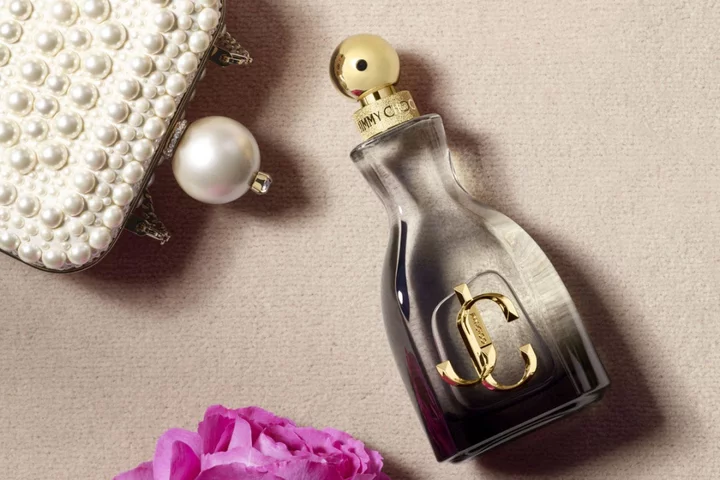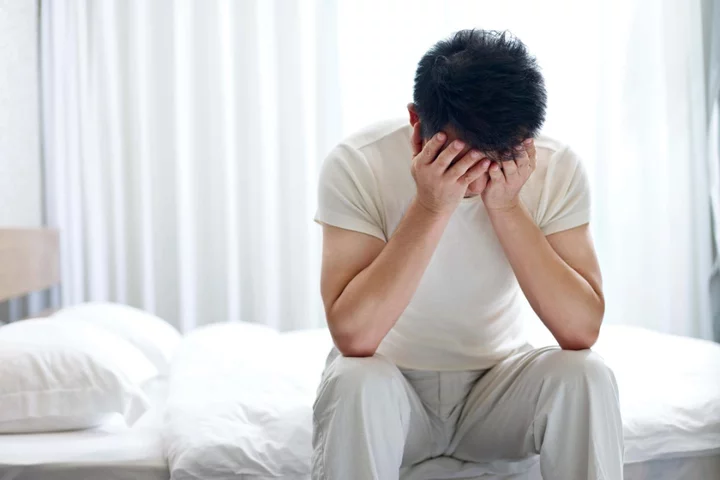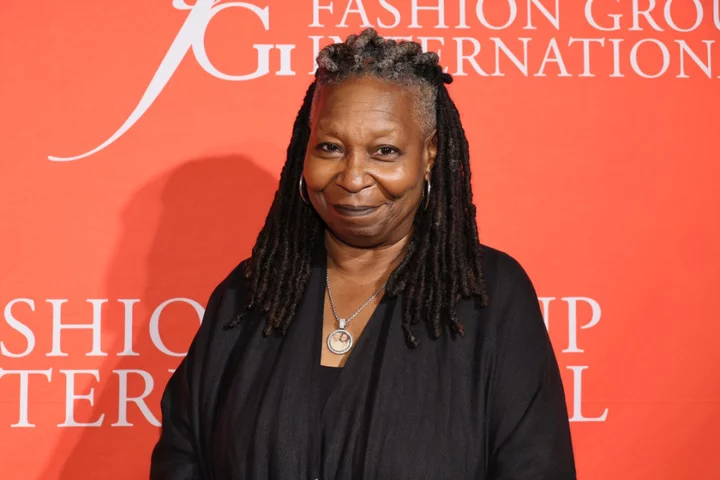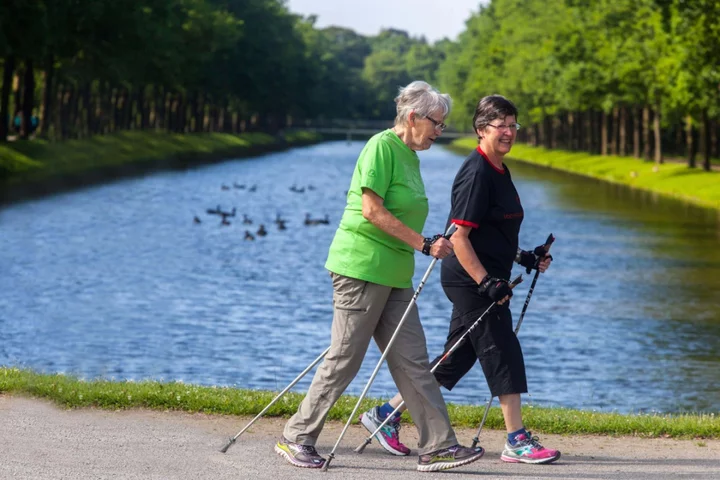
5 of the hottest new perfume launches for autumn/winter
With a switch in seasons and jumper weather signalling a change of mood, the same can be said for the structure of your scent. Suddenly a spritz of watery notes, summery sugariness and barely there blossom feels hollow… it’s your senses telling you it’s time for something heavier to match the weight of your winter wardrobe. And with so many breathtakingly beautiful perfumes and long-lasting elixirs to engage with, now’s the time to focus on a fragrance with some oomph… 1. Jimmy Choo I Want Choo Forever Eau de Parfum, £50 for 40ml (100ml for £64 also available), Fenwick A fanfare of deep raspberry-rose, cassis and intense, spicy sweet nuances, this is a stand-out fragrance in the Jimmy Choo range – with a rich earthy note and vanilla sweetness aligned with pink peppercorn. Extremely attractive with floral touches and sensual vanilla on the drydown. 2. Akro BAKE Eau de Parfum, £80 for 30ml, Fenwick Alluring and mood boosting, the name is a bit of a giveaway and will take you to a happy place. With top notes of praline, rum, vanilla cream and press of lemon, it’s quite hypnotizing – and if this was a luxurious box of truffles and pralines, the first tray would be gone. Base notes of bourbon, brown sugar and vanilla make for a sweet ending. 3. Tom Ford Café Rose Eau de Parfum Spray, from £90.10 for 50ml (100ml for £127.50 also available, Escentual Fans of Fords’ original Café Rose will adore this reimagined classic which pulls at the heart strings with its bouquet of velvety roses combined with seductive spices, dark coffee notes, with a warm sandalwood accord and notes of rose essence as the fragrance evolves. Divine. 4. Van Cleef & Arpels Collection Extraordinaire THÉ AMARA Eau De Parfum, £145 for 75ml, Fenwick A contemporary take on a tea note – think a morning stroll through a tea plantation – with enticing green, dry leafy aromas complemented by bergamot, rose and uplifting sweet pea; at its base there’s white musk and cedarwood lending depth, finishing with fresh powdery nuances and touch of rose. 5. Ormonde Jayne Arabesque Eau de Parfum, £195 for 88ml, Ormonde Jayne Arabesque is inspired by a journey through the spice souks and a sensory feast of patchouli and oudh. Opulent and sexy, with a sensual combination of rose, jasmine, fruity accords, vanilla, musk and wood… think gourmand with a whiff of grown-up glamour. Read More Consistent lack of sleep may increase risk of future depressive symptoms – study World Osteoporosis Day: The risk factors and early warning signs everyone needs to know about How to support a child with a stammer From colourful gowns to drones, these wedding trends are set take over 2024 Call The Midwife ‘should come with a health warning’ Halloween: 10 wicked ways to kit out your haunted house
1970-01-01 08:00

Liberia's Joseph Boakai courts smaller parties as run-off against George Weah looms
Joseph Boakai urges fellow opposition candidates to join the "rescue team for a resounding victory".
1970-01-01 08:00

BOJ will debate pros, cons of unconventional policy at workshop
By Leika Kihara TOKYO The Bank of Japan said on Friday it will debate the benefits and costs
1970-01-01 08:00

Gaza conditions worsen by the hour as fresh wave of protests expected across Middle East
Fresh protests against Israel's siege of Gaza are expected across much of the Middle East on Friday as aid agencies warned hospitals in the enclave are running out of fuel amid fears life-saving aid will be still stuck in Egypt for another day.
1970-01-01 08:00

Consistent lack of sleep may increase risk of future depressive symptoms – study
Consistently sleeping less than five hours a night could increase the risk of depression, research suggests. Poor sleep has been considered a side-effect of mental ill health in the past, but the new study found that the link between sleep and mental illness is more complex. People with a stronger genetic predisposition to short sleep – less than five hours in a given night – were more likely to develop depressive symptoms over four to 12 years, the study led by UCL researchers found. But those with a greater genetic predisposition to depression were not more likely to have short sleep. Using genetic susceptibility to disease, we determined that sleep likely precedes depressive symptoms, rather than the inverse Lead author Odessa Hamilton The experts also found that the link was not exclusive to those who were genetically inclined towards sleeping for shorter periods, and people who regularly dozed for five hours or less – without the genetic association – were also more likely to have depression. Lead author Odessa Hamilton, UCL Institute of Epidemiology and Health Care, said: “We have this chicken or egg scenario between suboptimal sleep duration and depression, they frequently co-occur, but which comes first is largely unresolved. “Using genetic susceptibility to disease, we determined that sleep likely precedes depressive symptoms, rather than the inverse.” Researchers used genetic and health data from 7,146 people recruited by the English Longitudinal Study of Ageing (ELSA), with an average age of 65. Short and long sleep durations, along with depression, are major contributors to (the) public health burden that are highly heritable Senior author Dr Olesya Ajnakina Analysis of genetic and health data suggested that short sleep was associated with the start of depressive symptoms, like feeling sad or lonely. Senior author Dr Olesya Ajnakina, UCL Institute of Epidemiology and Health Care and the Institute of Psychiatry, Psychology and Neuroscience at King’s College London, said: “Short and long sleep durations, along with depression, are major contributors to (the) public health burden that are highly heritable. “Polygenic scores, indices of an individual’s genetic propensity for a trait, are thought to be key in beginning to understand the nature of sleep duration and depressive symptoms.” When looking at non-genetic associations between depressive symptoms and sleep duration, the researchers also found that people sleeping five hours or less were 2.5 times more likely to develop depressive symptoms. And people with signs of depression were a third more likely to suffer from short sleep. Suboptimal sleep and depression increase with age, and with the worldwide phenomenon of population ageing there is a growing need to better understand the mechanism connecting depression and a lack of sleep Professor Andrew Steptoe The study, published in Nature, Translational Psychiatry, also revealed a link between sleeping long and developing depressive symptoms. According to the findings, people who slept for more than nine hours were 1.5 times more likely to develop depressive symptoms than those who sleep an average of seven hours. However, depressive symptoms were not associated with sleeping longer four to 12 years later, which corresponded to the genetic findings. Professor Andrew Steptoe, head of Behavioural Science and Health, UCL Institute of Epidemiology and Health Care, said: “Suboptimal sleep and depression increase with age, and with the worldwide phenomenon of population ageing there is a growing need to better understand the mechanism connecting depression and a lack of sleep. “This study lays important groundwork for future investigations on the intersection of genetics, sleep, and depressive symptoms.” People enrolled in the study had an average of seven hours’ sleep a night. More than 10% slept for less than five hours a night at the start of the study period, rising to more than 15% at the end of the study. The proportion of people classed as having depressive symptoms increased by about three percentage points, from 8.75% to 11.47%. In the study, data on sleep and depressive symptoms were combined from two Elsa surveys conducted two years apart, as sleep duration and depression are known to fluctuate over time. Sleep duration and depression are both partly inherited from one generation to the next. Earlier studies have suggested depression is about 35% heritable, and that genetic differences account for 40% of the variance in sleep duration. Read More World Osteoporosis Day: The risk factors and early warning signs everyone needs to know about How to support a child with a stammer From colourful gowns to drones, these wedding trends are set take over 2024 Call The Midwife ‘should come with a health warning’ Halloween: 10 wicked ways to kit out your haunted house Black magic: Go back to black this season with the catwalk-inspired trend
1970-01-01 08:00

BOJ's Ueda vows to 'patiently' maintain ultra-loose policy
By Leika Kihara TOKYO The Bank of Japan will "patiently" maintain ultra-loose monetary policy and respond "nimbly" to
1970-01-01 08:00

New Zealand landlord loses rubbish row with Chinese embassy
The landlord claimed the embassy failed to pay up to NZ$960 in rubbish removal and other costs.
1970-01-01 08:00

Deadpool 3 delayed from May 2024
'Deadpool 3' is halfway done and unlikely to make its pencilled-in release date next May.
1970-01-01 08:00

Jon Bon Jovi named MusiCares Person of the Year
Jon Bon Jovi has been named the 2024 MusiCares Person of the Year and will be honoured at a special gala in February.
1970-01-01 08:00

Keith Richards reveals Charlie Watts' death 'jolted' The Rolling Stones into making new album Hackney Diamonds
The Rolling Stones have released their first album of new material in almost a decade.
1970-01-01 08:00

‘Do I really look that ridiculous?’ Whoopi Goldberg admits feelings were hurt over reaction to 1993 Oscars look
Whoopi Goldberg has hit back at previous criticism of her infamous outfit choice at the 1993 Oscars. During an interview with Page Six Style at the Fashion Group International Night of Stars gala, Goldberg spoke candidly about her look at the Academy Awards ceremony: A purple and green bejeweled jumpsuit paired with a puffy, long purple jacket with a bright green interior. She completed the outfit with green earrings and heels, and dark purple lipstick. Goldberg went on to recall that when she was hit with backlash for the bold look, she was stung by the criticism. “Everyone hated [it],” she said. “It hurt my feelings, I’m not going to lie. It hurt my feelings.” The View host also confessed that the response to the outfit would go on to affect the way she dressed. “It kept me from dressing up for a very long time,” she said. “You have to remember, in those days, they would say things and you’d think, ‘Do I really look that ridiculous?’” However, she still opened up about the inspiration behind the outfit, specifying that it came from the iconic I Love Lucy sitcom and its lead, the late Lucille Ball. “Lucy would always come out in these great ensembles,” Goldberg said. “And I thought, I would like to wear that! And green is not a color I would normally wear; let me try it.” When asked if she still stands by her decision to wear the bold look at the 1993 Oscars, she simply said: “Absolutely.” Over the years, Goldberg has gone on to embrace her own sense of style, launching her own clothing line, Dubgee, in 2019. Speaking to InStyle about the brand – which sells a range of stretchy jeans and hoodies – she shared her candid thoughts about fashion, expressing that people shouldn’t let their age determine what types of clothes they wear. “People will always say to somebody young, ‘Oh, you’re dressing so old,’ and they will say to an older woman, ‘Oh, you’re dressing too young,’” she told the publication in 2019. “The clothes that we made, you could be 21 and wear it, you could be 65 and wear it, you could be whatever age you are and look good in it. And feel good in it. You’re not too old to wear anything that makes you happy. That’s the key. The only important voice, ever, is your own.” In July of this year, the Sister Act star also made headlines for her shoe choice on The View: A pair of clear platforms with decapitated heads of Barbie dolls in them. Although she wore the heels to celebrate the highly-anticipated premiere of Barbie, she told Page Six Style that she’s actually had these “crazy” shoes for quite some time. “Someone sent them to me and I thought, what are these?! It was about three years before Barbie. I did Barbiecore first!” she said, referring to the fashion trend where people have been showing off their looks inspired by the Mattel doll. Read More Victoria’s Secret ditches feminist makeover after sales slump Black magic: Go back to black this season with the catwalk-inspired trend From collars to gloomy garments: How to dress like Wednesday Addams for Halloween
1970-01-01 08:00

World Osteoporosis Day: The risk factors and early warning signs everyone needs to know about
October 20 marks World Osteoporosis Day – but despite being a relatively common condition, many people are unaware they’re at risk. According to Age UK, osteoporosis – which is associated with weakened bones and often referred to as a ‘silent disease’, as symptoms can creep up on people – affects approximately three million people in the UK. Yet, many only find out they have it when they break a bone. “[Osteoporosis] is a condition characterised by weakened bones, making them more prone to fractures,” explains Dr Zulqarnain Shah, a medical director at SSP Health. “It occurs when the body loses too much bone or makes too little bone, or both. Diagnosis of osteoporosis typically involves a combination of medical history, physical examination, and specialised tests, such as bone mineral density scans,” Shah adds. Could I be at risk of osteoporosis? According to Age UK, around half of women over 50, and around one in nine men in the same age group, will experience a fracture due to osteoporosis. However, several risk factors contribute to the development of the condition, meaning some people may be more likely to get it. “These include menopause, low calcium and vitamin D intake during younger years, family history, a sedentary lifestyle, smoking, excessive alcohol consumption, and certain medications,” explains Shah. “While it may not be possible to prevent all cases of osteoporosis, adopting a healthy lifestyle with regular weight-bearing exercise, a balanced diet rich in calcium and vitamin D, and avoiding smoking and excessive alcohol intake can help reduce the risk.” Being aware of osteoporosis can be particularly important if you have a family history. “A family history of osteoporosis or fragility fractures can indicate an increased risk,” explains Dr Elise Dallas, GP at The London General Practice. Other things that increase risk include having a history of “rheumatoid arthritis, low levels of oestrogen due to early menopause, anorexia nervosa or Turner’s syndrome, hyperthyroidism, parathyroid disease, Crohn’s and coeliac disease, and conditions that cause long periods of immobility”, adds Dallas. What are the symptoms of osteoporosis? When you have osteoporosis, you may suffer from “increased fracture risk, height loss, and chronic pain”, says Shah. “Fractures associated with osteoporosis are known as ‘fragility fractures’, which can occur with minimal impact. Fractures commonly occur in the spine, hip, and wrist, and can lead to significant pain, disability, and reduced quality of life,” he explains. Are there any early warning signs? Shah says: “Early signs of osteoporosis may not be apparent until a fracture occurs. However, a precursor condition called osteopenia may be detected through scans before the onset of full-blown osteoporosis.” Osteopenia is where the density of the bones decreases, but not thoroughly enough to be classed as osteoporosis. There are no real symptoms however, so it can only be detected with scans. The good news is, lifestyle measures and sometimes treatment can help prevent it getting worse. How is osteoporosis treated? Treatment for osteoporosis is mostly aimed at “strengthening bones and preventing fractures”, says Shah. “This typically involves a combination of lifestyle modifications, such as exercise and dietary changes, along with medication. “Medications may include calcium, vitamin D and bisphosphonates, hormone therapy for postmenopausal women, selective oestrogen receptor modulators (SERMs), and other options. “SERMS help manage the way oestrogen interacts with your body and has a similar impact on osteoporosis as hormone replacement therapy, to help mitigate the impacts of hormones on osteoporosis,” Shah explains. “Regular monitoring and adherence to treatment plans can help slow down or stop the progression of osteoporosis. A bone density scan – also known as a DEXA scan – can help monitor the progress of a condition and may be done at three to five-year intervals to assess progress. “Once a patient has been on bisphosphonates for five years, they may go on a ‘pill holiday’ for a couple of years, though the benefits of taking bisphosphonates continue long after the medication is stopped.” Getting support and advice to manage any pain and mobility challenges and reduce the risk of falls and injuries can also be very important for people living with osteoporosis, along with finding ways to stay active. If you are worried about your bones and osteoporosis risk you can reach out to charities like the Royal Osteoporosis Society and find out about your risk level. Read More How to support a child with a stammer From colourful gowns to drones, these wedding trends are set take over 2024 Call The Midwife ‘should come with a health warning’ Halloween: 10 wicked ways to kit out your haunted house Black magic: Go back to black this season with the catwalk-inspired trend How to prep your home for when the clocks go back
1970-01-01 08:00
